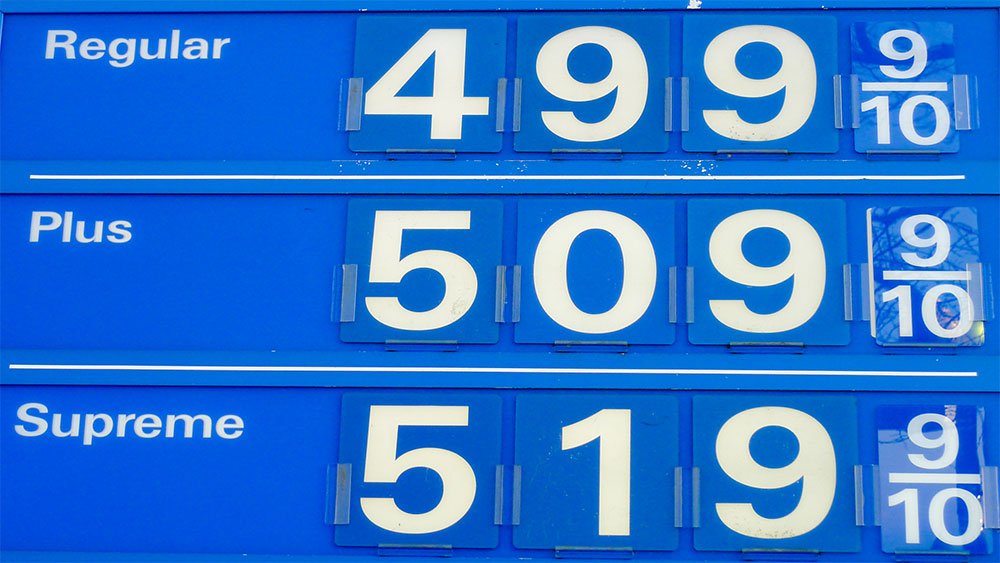The consumer price index came in hotter than expected in April, but the CPI inflation rate finally began to pull back from the highest level in 40 years. Stocks sold off after CPI report, then fought back, with the Dow Jones solidly higher in Wednesday morning stock market action.
X
The CPI rose 0.3% from the previous month and 8.3% from a year ago, easing from March’s 8.5% inflation rate, the Labor Department said. The core CPI, which strips out volatile food and energy categories, rose 0.6% from March. The annual core inflation rate fell to 6.2% from the previous month’s 6.5% reading, which was the highest since August 1982.
Economists expected the overall CPI to rise 0.2% on the month as the annual CPI inflation rate slipped to 8.1%. The core CPI was seen rising 0.4% vs. February and 6% from a year ago.
Bigger-than-expected price increases in April partly reflected strength in housing costs and medical services. Services inflation reached 5.4%, the highest since May 1991.
The lower inflation rate in April partly reflects big price increases that occurred in April 2021 falling out of the 12-month price change. Price pressures also may be easing as demand slows, at least in some categories.
In a separate release on Wednesday, the Adobe Digital Price Index fell 0.5% on the month, as the annual online inflation rate eased to 3.6% from 2.9%. Adobe noted 10 of 18 categories saw monthly price decreases.
The 0.6% monthly rise in the core CPI inflation rate, if sustained, would add up to a 7.2% annual core inflation rate. That compares to Federal Reserve projections of 4.1% core inflation in 2022. If inflation stays on pace to exceed projected Fed levels, policymakers will probably have to tighten further and faster than expected.
Keep in mind that the CPI differs from the Fed’s preferred personal consumption expenditures price index. The latter includes government purchases on behalf of consumers such as by Medicare and Medicaid. It also factors in a substitution effect, when high prices lead consumers to adapt purchasing behavior.
Dow Jones Treasury Yields Reaction To CPI Inflation Rate
The Dow Jones Industrial Average rose 0.8% after the CPI report. The S&P 500 added 0.8%, while the Nasdaq composite gained 0.6%, as markets continue to adjust. Futures were up roughly 1% or more heading into the inflation report, then reversed lower, with techs bearing the brunt of the selling.
Russia’s Ukraine invasion threw gas on the inflationary problem in the US and around the globe, sparking a selloff. But lately markets have been selling off amid worries that the Federal Reserve will overtighten, sending the economy into recession and the Dow into bear market territory.
As of Tuesday’s close, the Dow was off 12.6% from its record closing high on Jan. 4. The S&P 500 has fallen 16.6% from its peak, while the Nasdaq composite has tumbled 26.9%.
It remains to be seen whether inflation begins to come down from its peak can create a sustainable rally. Be sure to read IBD’s The Big Picture column after each trading day to get the latest on the stock market trend and what it means for your trading decisions.
After the CPI report, the 10-year Treasury yield rose 1 basis points to 3%, but off morning highs. That’s after pulling back from above 3% on Tuesday. The 10-year yield had traded down to around 2.94% before the inflation data.
CPI Inflation Report Details
Prices for used cars and trucks fell 0.4% on the month, and rose 22.7% from a year ago. However, that compares to March’s 35.3% annual gain.
Demand for used cars has gotten a boost amid the global chip shortage that has snagged production for new cars. Prices for new vehicles jumped 1.1% on the month, while rising 13.2% from a year ago. That’s the biggest annual increase since 1949.
Energy prices fell 2.7% on the month and increased 30.3% from a year ago. Gasoline prices have set new highs in recent days.
Prices for food away from home rose 0.6% in April vs. March, while rising 7.2% from a year ago. Prices for food consumed at home climbed 1% last month and 10.8% from a year ago.
Prices for medical services rose 0.5% on the month, bringing the year-over-year increase to 3.5%, largest since October 2020.
Meanwhile, shelter prices rose 0.5% in April, as owners’ equivalent rent rose 0.6%. Shelter costs are up 5.1% from a year ago, while owners’ equivalent rent is up 4.8%. Both are the highest since 1991.
YOU MAY ALSO LIKE:
Best Growth Stocks To Buy And Watch
Why This IBD Tool Simplifies The Search For Top Stocks
Catch The Next Big Winning Stock With MarketSmith
Want To Get Quick Profits And Avoid Big Losses? Try SwingTrader
